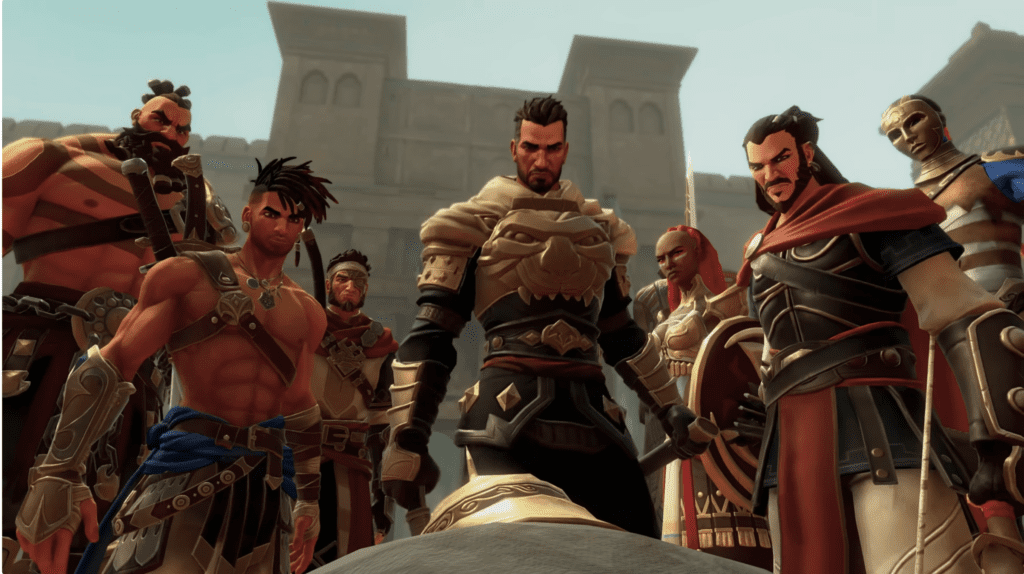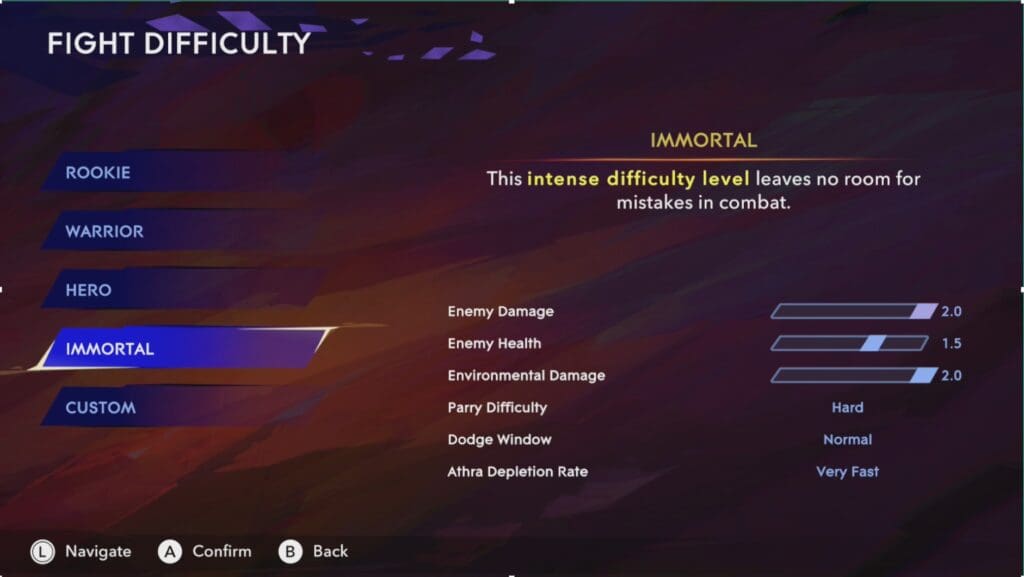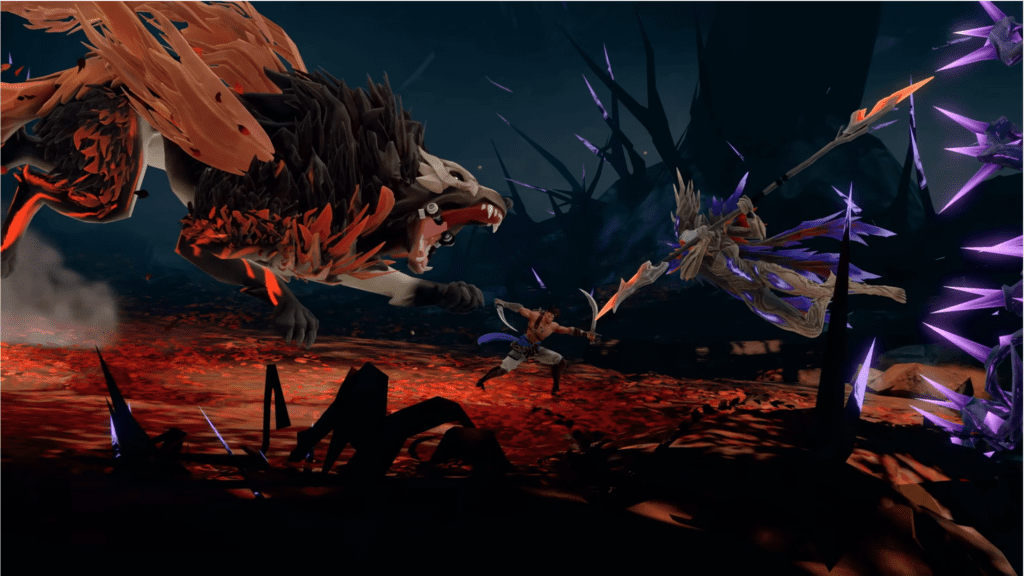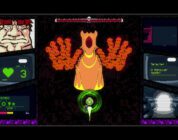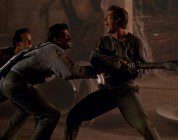Six months ago, I had the opportunity to check out the Ubisoft Forward event during Summer Game Fest 2023. While at the event, Ubisoft gave guests the opportunity to preview The Crew: Motorfest, The Division Resurgence, and Prince of Persia: The Lost Crown; additionally, select guests had the chance to get an early sneak peek at Assassin’s Creed Mirage, Avatar Frontiers of Pandora, and Star Wars Outlaws. Over the last six months since that meeting, I have been reflecting on my time with Prince of Persia: The Lost Crown and mulling over the rumor that Assassin’s Creed Mirage was originally supposed to be a Prince of Persia title. Despite any internal conflict, I went into the Prince of Persia: The Lost Crown review with an open mind.
Story
Experience Sargon’s story as he goes from the youngest member of the Immortals and newly honored war hero to the grand investigator to the prince’s kidnapping. Upon arriving at Darius’ castle, Sargon notices that something is off after discovering the rotten remains of Ardashir’s men; this is a shocking discovery since the men left only a few hours before the Immortals. Quickly the player learns that there is something unusual going on in the city. Does QAF, the city trapped in time, have a mystery behind it? Did Anahita kidnap the prince to gain power from Simurgh?
These are first two the questions the player must discover. As the story unfolds, the plot thickens and everything Sargon thought he knew comes into question. While gathering abilities to reclaim the prince, Sargon encounters allies who have experienced time differently than himself; on top of that, he discovers an alternate version of himself that feels like it can succeed if given a second chance.
Learning Abilities
Throughout the story, the player is forced to search for different abilities to progress. These abilities make it fairly easy to backtrack and uncover the mysteries of previous areas but sometimes only one at a time. The story is a fun creative spin to the Prince of Persia universe, but might be difficult for players to jump into with the change of protagonist and gameplay style change. Once you are deeper into the story, you start to forget some of the hesitations you might have had and just want to find out what is happening.
The only thing the game is missing is a lack of multiple dialog options. Yes, this seems semi convoluted but at times, certain encounters feel like they could be enhanced or potentially avoided if the player chooses the right dialog tree. Are we honestly supposed to believe that all of Sargon’s allies immediately do not trust him?
Outside of that issue, the story is fairly solid but takes a while to get used to due to the game’s level padding. While playing, the thought why is this area so empty, or was this necessary came across my head on numerous occasions. That ultimately leads us in to the gameplay portion of Prince of Persia: The Lost Crown.
Gameplay
Upon booting up Prince of Persia: The Lost Crown and starting a new game, players are asked if they want to play in either the Exploration or Guided game modes. In Exploration mode, the game gives the player minimal map information; on Guided, the map will show the player where they will ultimately need to go and which way the player must go to access a blocked path. Despite Guided showing the player their ultimate destination, it is still very easy to get lost. The game does feature a golden guiding wind but that appears rarely. Players can buy a map of the area from a small child for a few bits, but that only shows the dungeon’s layout. On multiple occasions, I found myself getting lost and having to double back or run around aimlessly until I ultimately found my way.
After selecting the Game mode, the player can then choose their difficulty. Ubisoft gives players a decent variety of difficulties to play on including Rookie, Warrior, Hero, Immortal, and custom; within custom, the player can scale the enemy’s health, damage, environmental damage, parry difficulty, dodge window, Athra depletion & gain rates. The player can make the game easier than Rookie difficulty or harder than Immortal difficulty. Once in the game, the player can change the game’s difficulty, adjust the targeting assist, and toggle the Guided mode.
Fundamentals
At the start of the game, the player is given the core fundamentals of the key gameplay elements. At first, these core concepts can take a while to get used to and feel a bit sluggish but after some time with them, they become routine. As the game introduces new abilities, it immediately throws the player into the frying pan forcing them to be used. Some of the abilities such as the dimension shift and shadow ability do take a bit to get used to. On multiple occasions, I accidentally rewound to my shadow and had to redo a puzzle that I had just completed. If you do not feel like doing a puzzle or platforming, Ubisoft has come up with an option for you; Prince of Persia: The Lost Crown offers a platforming assist option allowing players to skip challenging platforming sections.
Players can upload their save to play the game on other devices. The game features multiple save file slots so you can play the game on varying difficulties and even attempt speed runs.
Accessibility/Controls
On top of the varying difficulties, game modes, and ability to skip platforming puzzles, the game provides a variety of accessibility options. Players can make it so the screen won’t shake when taking damage, remove/reduce vibrations, change the hud scale, and have a visible indicator for interactive areas. The difficulty settings can be changed within the game which helps if any boss is too difficult. Players can adjust the controller’s layout or invert the access. In the customize controls option, the player can remap the layout to make it easier to use abilities. If you want all the special abilities on bumpers you can. Prince of Persia: The Lost Crown utilizes every button on the controller without feeling awkward or encumbering. With remapping abilities, you can make the game feel like a 2D Souls-like platformer.
Graphics
At first, Prince of Persia’s graphics were not my cup of tea. My love for 2D side scrollers that try to be pretty has faded over the years and has been replaced by 2D games that aim to reignite the nostalgic feeling. Despite being a 2D Metroidvania, Ubisoft’s artists have done an excellent job creating a vibrant landscape with even some of the smallest objects with the game having a good amount of detail. Bosses are beautiful to look at and some of the environmental set pieces and graphic effects are breathtaking. Players can adjust settings within the game to improve their experience. Players can put on subtitles, subtitle background, font, HUD size, contrast, and subtitle language. The execution of graphics is nearly flawless beyond one stutter skip we had early on.
Audio/SFX
Ubisoft has done almost a perfect job with Prince of Persia: The Lost Crown’s soundtrack. Each character within the game sounds believable with the voice actors conveying emotional responses and drawing you in with their personalities. The sound effects they put into the game are top-notch as well; at one point, I thought my windchimes outside were ringing just to find out it was the chimes in the game. Just the level of detail that the team has put into the game sells every moment whether it be a casual encounter or epic boss fight.
The game does feature limited sound accessibility settings. Players can adjust the game’s language and volume levels. That’s all, no sound set up, no hard of hearing, no sound-to-text options.
Replay Value
With Prince of Persia: The Lost Crown, the replay value comes down to each player. If you like to speed-run the game or play them on a variety of difficulties, then Prince of Persia welcomes back players. With the game’s length, unless you map out each area, speed runs will take a little bit of time to accomplish. The game does feel a bit inflated so those who want to play through a game quickly will want to avoid Prince of Persia: The Lost Crown (POP: LC). POP: LC has a playtime of 20 to 25 hours so revisiting it might be a deterrent but between guided and exploration each attempt can feel different.
Verdict
Going into Prince of Persia: The Lost Crown, I had my doubts. By the time we got to this review, most of those doubts had been erased. Yes, it would have been nice to see a Prince of Persia in an Assassin’s Creed style but what we got was still excellent. The game’s story was a bit slow at times but that is primarily due to the game’s awkward spacing and lack of utilizing different parts of the environment. The gameplay is a nice blend of mechanics that we see in other Metroidvanias like Infernax, Ori and the Blind Forest, and Hollow Knight; it manages to scratch the itch that games like those have created.
The attention to detail whether it is the sound effects, graphics, or voice acting can win over some of the most cynical gamers if they give it a chance. The ability to remap the controls to best suit your play style is a massive bonus that can even provide a challenge if so desired. At the end of the day, Prince of Persia: The Lost Crown might not be the Prince of Persia title we asked for but it is one that exceeded our expectations in almost every way. Whether you pick it up through early access, on release day, or down the line you are sure to have a good time if you like Metroidvania’s or platformers.
Prince of Persia: The Lost Crown enters early access on January 15th, 2024; the game officially launches on January 18th, 2024 for Xbox One, Xbox Series X|S, PlayStation 4, PlayStation 5, Nintendo Switch, and PC.
An Xbox code was provided by Ubisoft for review purposes.

